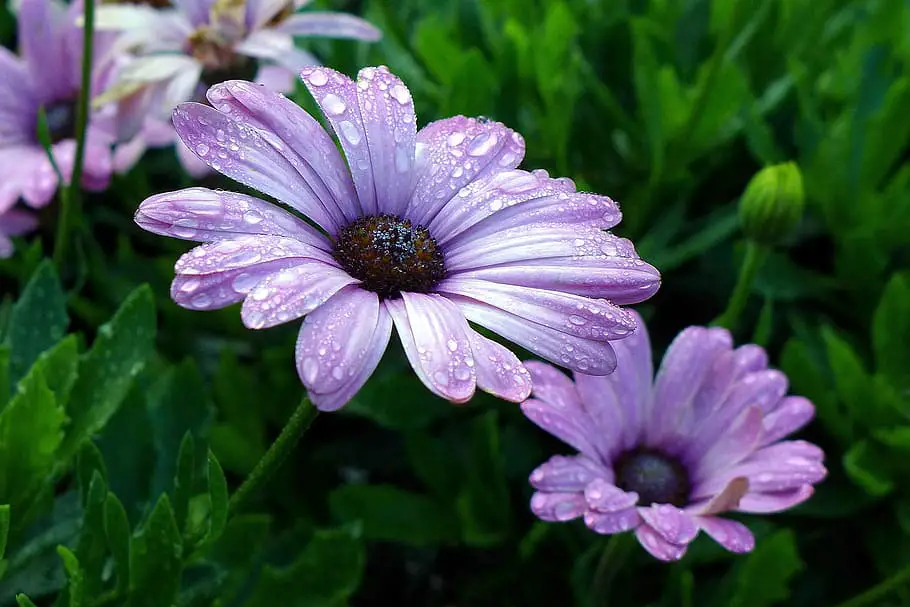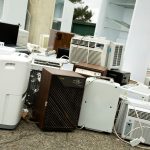The ideal of an air purifier sounds amazing. A device to purify the ambient air , removing contaminants like dust mites, musty smells, second hand smoke, and pet allergens.
And when you factor in that indoor air can be much worse than the air outdoors. You understand.
But in the real world, What does an air purifier do? do all air purifiers actually live up to the promise?
Table of Contents
How do air purifiers work?
The typical home air purifier uses a fan to pull air through a filter or a series of filters. As the air travels through the filter, the particulates in the air get caught, leaving the air pure as it exits.
The HEPA(high efficiency particulate absorber) filter that does the heavy lifting has to be replaced periodically to keep the air purifier working efficiently.
Filters run anywhere from $16.99 up to $38.99. Factor in the energy cost and you’re probably looking at at least $100 in additional cost to run your air purifier all year.
How often you change your filter depends on the Brand and type of air purifier you buy.
The pre filter in an a air purifier is usually washable because it is intended to filter out larger debris like hair before it reaches the dense HEPA.
HEPA filters are a very dense mesh of fiberglass and sometimes paper that are made specifically to capture particulates as small as .03 microns.
Giving their density and the materials they are made from, you should count on replacing them rather than trying to wash them.
 Most air purifiers incorporate an activated carbon filter or filter layer to help reduce odors.
Most air purifiers incorporate an activated carbon filter or filter layer to help reduce odors.
Activated carbon filters in air purifiers are usually made from charcoal.
Instead of being like a traditional filter, carbon or it’s more like a sponge that adsorbs gas molecules.
The porous nature of activated carbon makes them near impossible to clean.
Other air purifiers rely on ionization to clean the air.
Ionic air purifiers or Ionizers work by polarizing the air. By producing and emitting ions into the airstream, ionizers cause the particles in the air to bond together.
The result is that particles become too heavy to float and fall to the surface.
You will often find multi-tech air purifiers that come with both filters and a ionizer.
These two technologies work well together because ionizers can help clump particles together that otherwise may be too small for a filter to capture.
Ionizers also have other benefits that you cannot get from an air purifier that depends on filters alone.
Namely they can provide an anti bacterial effect that filters do not.
One government study using a Bi polar Ionizer ( Ionizer that emits both negative and positive ions) provided evidence that when virus and bacteria cells are surrounded with ions, the ions render the cells inactive.
Ionizers are intended to work as a air treatment other than an air purifier that is left on constantly.
Though not an excessive amount and under the federal allowance of
.05 ppm , Ionizers can create ozone as a by-product.
Ozone can be a breathing hazard if it allowed to build up.
Other air purifiers use Ultraviolet Irradiation.
Ultraviolet light is unique because in order for it to work it has to be focused directly on its intended target.
Obviously air is not something that can be targeted.
So using UV light as an air purifier is about locating the source of the air pollution and pointing the light directly on that.
1.One way of doing this is to purchase an air purifier that has a UV light that is focused on the HEPA filter. This works to reduce germ and bacteria growth on the filter.
2.The second way UV is used to prevent indoor air pollution is to place it above known mold sources like cooling coils and drip pans inside of HVAC systems.
(central heat and air handlers).
3.Thirdly, UV can be targeted on a titanium catalyst.
This type of air purifier is called a photocatalytic oxidation air purifier and it works by creating a blanket of hydroxyl ions and hydroperoxide ions that oxidize air pollutants rather than just weigh them down.
Should I buy an air purifier?
Air purifiers may not be the best end all solution for every type of breathing and household allergy issue.
For instance, if the air is too moist or on the other extreme to dry, there are times of the year when a humidifier or a dehumidifier would probably be be a better choice.
A humidifier in a dry climate or House can actually help with the air quality because adding moisture to the air will help dust fall and adhere to surfaces easier.
A dehumidifier in the hot muggy months can reduce dust mites and keep mold from forming and releasing mold spores into the air.
But though an air purifier may not be the end all solution for every type of air quality situation, it is useful all year long, we’re as you may not be able to say the same thing about a humidifier or a dehumidifier.
 Final thoughts
Final thoughts
What is an air purifier? What does it do?
An air purifier simply a device that removes particulates from the air.
Particulates can include pollen, pet dander, dust mites, and mold spores.
Most air purifiers perform like a fan that pulls air through a filter or a series of filters.
HEPA is the primary filter that is engineered to capture particles as small as .03 microns.
Ionizers are another type of air purifier that works by charging the air so that the particles in the air become polarized and clump together.
This provides the extra volume and weight that can make extra small particles large enough to be captured in a HEPA filter.
Be sure to take into account that air purifier filters must be changed semi frequently to allow for the air purifier to work efficiently.
Some air purifiers come with UV lights installed to help reduce the number of live bacteria colonies that can get trapped in a hepa filter. UV lights have about a one-year life. That is also something you should factor into the cost of an air purifier.








